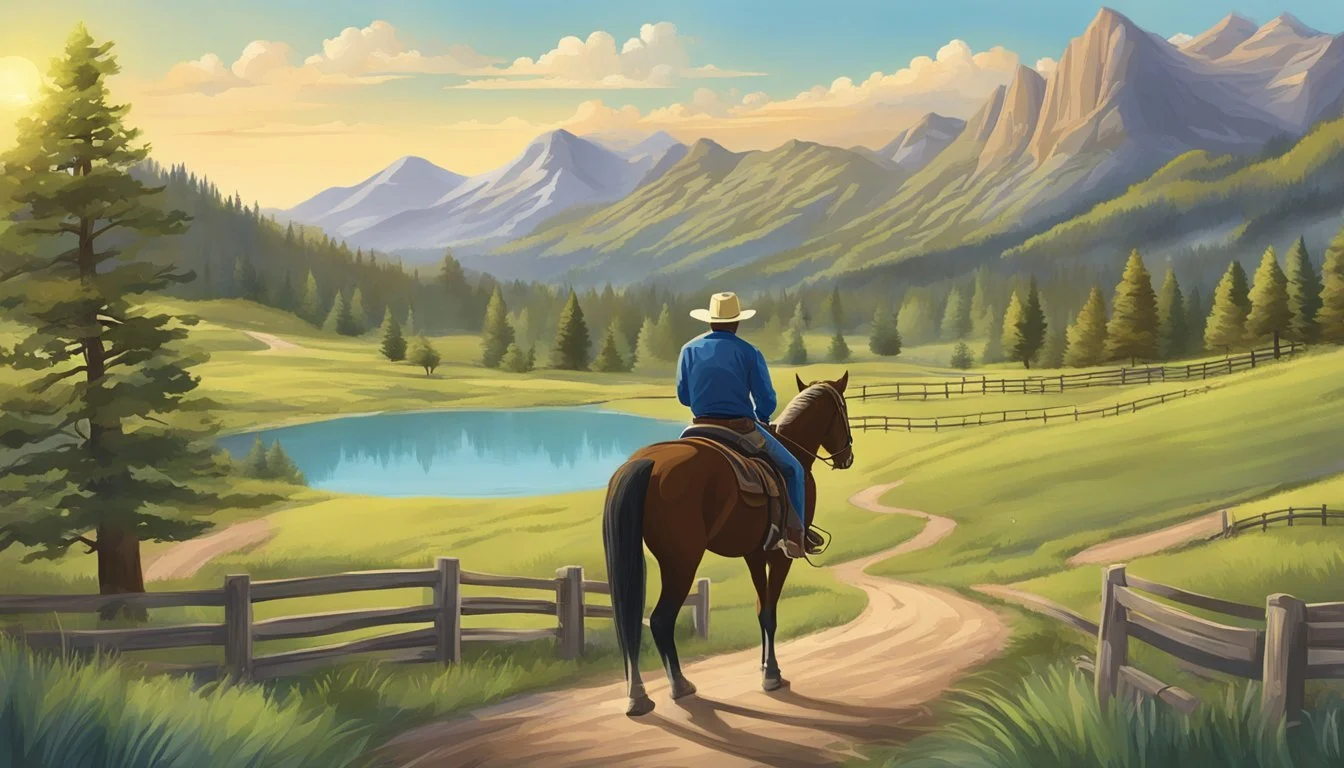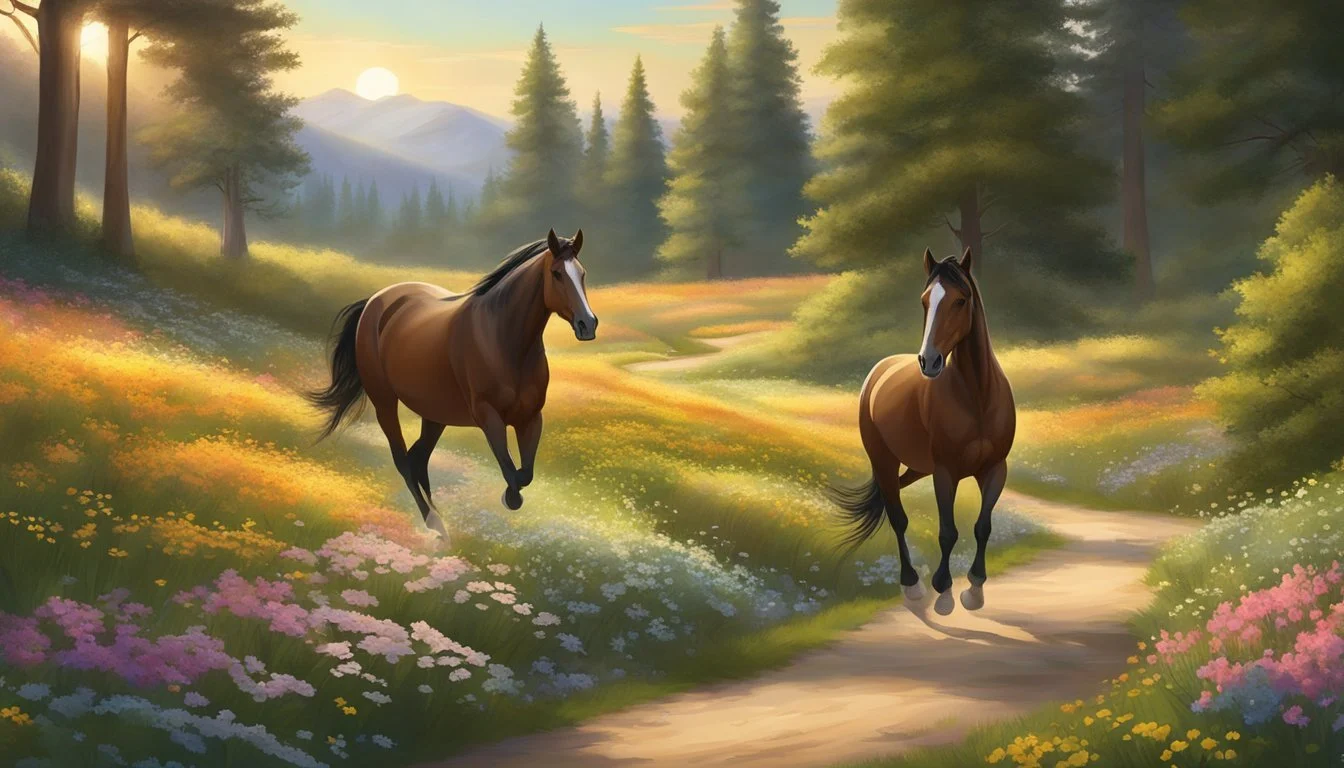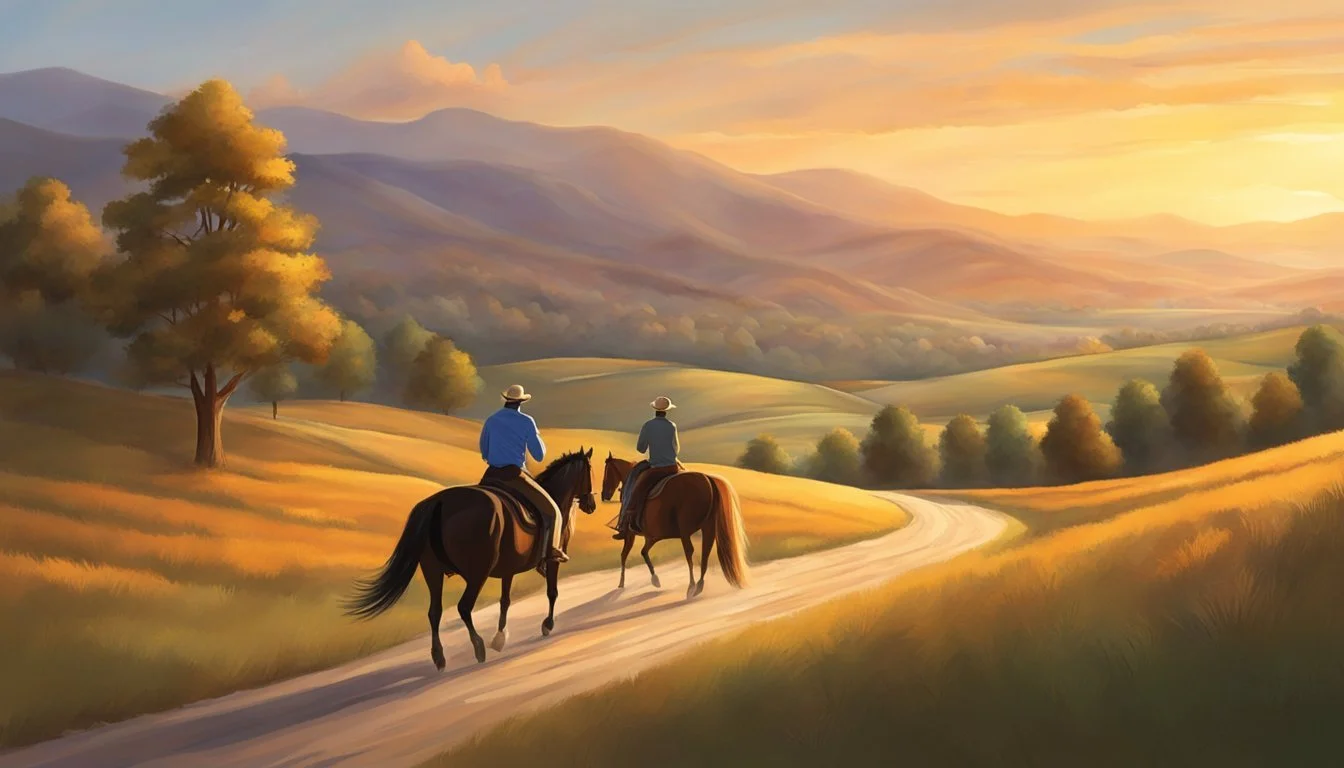Easter Horseback Rides
Charting Your Perfect Scenic Trail Adventure
Easter offers a unique opportunity to blend the tradition of a holiday with the adventurous spirit of horseback riding. Planning an Easter horseback ride allows individuals and families to experience the rejuvenating effects of the great outdoors during a time of renewal and celebration. As the spring landscape awakens with vibrant colors and longer days, riders can embark on scenic trails that offer both tranquility and excitement.
Selecting the perfect trail for an Easter horseback ride requires consideration of the riders' experience levels. For beginners, flat and well-marked trails provide a safe environment to enjoy the ride without the challenges of more difficult terrain. Intermediate riders might seek out trails offering varied landscapes with gentle inclines, while experienced equestrians could opt for routes that present opportunities to navigate more challenging paths. Regardless of skill level, the key to a memorable Easter trail ride lies in matching the route with the riders' abilities to ensure a delightful experience for everyone.
In regions like Colorado and Montana, horseback riding is not just a leisure activity but an integral part of the local culture and history. Colorado's Palisade offers guided rides through wineries and along the Colorado River, a setting that combines natural beauty with the area's renowned vineyards. Montana's Diamond P Ranch near West Yellowstone provides riders with spectacular views of the Gallatin National Forest, just a stone's throw from Yellowstone National Park. Closer to the west coast, Snohomish County in Washington boasts the Centennial Trail, where riders can explore 30 miles of terrain from sunrise to dusk. These destinations showcase the diversity and allure of trail riding, making them excellent considerations for planning an unforgettable Easter ride.
Selecting the Perfect Ranch
When planning an Easter horseback riding trip, the choice of ranch is crucial, with each offering unique experiences, from serene trail rides to authentic cattle work. It's important to carefully consider the type of ranch and the amenities available to ensure the trip meets all expectations.
Understanding Different Ranch Types
Dude Ranches:
Aimed at novices and families
Offer gentle trail rides and a variety of leisure activities
Working Ranches:
Provide a more authentic experience involving cattle work
Suitable for intermediate to advanced riders
Outfitters:
Specialize in guided trail rides, often without on-site accommodation
Best for those looking solely for horseback riding adventures
Guest Ranches:
Cater to individuals seeking a blend of horse riding and other ranch activities
Accommodate all experience levels and frequently include all-inclusive stays
Evaluating Amenities and Services
Accommodations:
Dude ranches and guest ranches typically offer comfortable lodging, ranging from rustic rooms to luxurious cabins.
Working ranches may provide more basic accommodations, emphasizing the immersion in ranch life.
Activities:
Check if the ranch offers Easter-specific activities, such as egg hunts or special trail rides.
Amenities can include:
Swimming pools
Spa services
Evening entertainment
Meals:
Most ranch vacations provide all meals, with some emphasizing gourmet dining and others home-style cooking.
Inquire about the ability to accommodate dietary restrictions.
Horseback Rides:
Duration can vary from a few hours to full-day rides.
Some ranches allow for tailoring the trail routes to suit riders' preferences.
By understanding the different types of ranches and carefully evaluating their amenities and services, one can select the perfect ranch for an unforgettable Easter horseback ride.
Trail Selection Strategies
When planning an Easter horseback ride, the selection of the right trail is crucial. Riders should consider the scenic value and wildlife opportunities, as well as the trail difficulty, to ensure a memorable experience.
Considering Scenery and Wildlife
The allure of a trail can often be found in its scenic vistas and wildlife. Riders should seek out trails that showcase the beauty of spring, such as those winding through forests with budding trees or along shimmering lakes where the water reflects the bright sky. Trails that ascend into the mountains can offer breathtaking overlooks where one might spot a deer grazing in the distance. Such trails not only elevate the riding experience but also bring riders closer to nature.
Forest Trails: Canopy of green, possible wildlife sightings including deer and birds.
Lakeside Trails: Reflective waters, opportunities for riding along the shore.
Mountain Trails: Elevated views, wildflowers, and dramatic landscapes.
Assessing Trail Difficulty
The difficulty level of a trail should match the riders' skills and comfort levels. Beginners might prefer flat, well-maintained trails, while experienced riders may seek more challenging paths. Features such as steep inclines, rocky terrain, or narrow passages require careful consideration. Trails should be evaluated for:
Elevation Changes: Steeper trails offer more challenge but may provide better views.
Surface Conditions: Rocky or loose surfaces can increase the difficulty.
Trail Width: Narrower trails might present more obstacles and require skilled navigation.
By thoroughly assessing the scenic quality and the difficulty of the trails, planners can ensure a safe and enjoyable Easter horseback ride for everyone involved.
Horseback Riding Basics
When embarking on scenic Easter horseback rides, one must consider the essentials of equipment and safety. These foundational elements ensure an enjoyable trail riding experience.
Choosing the Right Saddle
Selecting an appropriate saddle is paramount for both rider comfort and horse welfare. A well-fitting saddle helps maintain balance and aids in effective communication between horse and rider. For trail riding, one typically uses a Western saddle due to its durability and the support it offers for long rides. It is characterized by a deeper seat, a horn for holding onto, and typically broader stirrups. English saddles can also be used for trail riding; they are lighter and allow closer contact with the horse but usually require a more experienced rider. Key factors to consider include:
Saddle Fit: It must fit the horse’s back and the rider's seat comfortably.
Weight: A heavier saddle provides stability, but make sure it doesn't burden the horse.
Material: Leather saddles are traditional, while synthetic materials offer weather resistance and decreased weight.
Horse Riding Safety Tips
Safety while trail riding cannot be overemphasized. Riders should always wear protective gear, such as ASTM/SEI-certified helmets, and sturdy, closed-toe shoes with a small heel to prevent the foot from slipping through the stirrup. Additional safety tips include:
Pre-Ride Checklist: Ensure all tack is secure and in good repair before setting out.
Weather Preparedness: Dress appropriately for weather conditions and carry sun protection.
Emergency Equipment: It's advisable to bring a set of wire cutters in the event of entanglement in loose wire or other debris along the trail.
Communication: Always tell someone your planned route and expected return time.
By prioritizing these basics, riders set the stage for a serene and memorable trail riding experience.
Guided Tour Insights
A successful Easter horseback ride hinges on the expertise of the guides and the design of the scenic trail. These elements work in harmony to provide a memorable and safe experience.
Roles of Guides and Wranglers
Guides and wranglers play pivotal roles in ensuring both safety and enjoyment during horseback tours. They are not only skilled in navigating the terrain but also possess extensive knowledge of the local flora and fauna, which enhances the educational aspect of the ride. The wranglers are responsible for matching riders with suitable horses, evaluating the rider's experience level, and offering instructions on horse control and safety. On the trail, they keep the group together and assist with any issues that may arise, whether it's a horse's behavior or a rider's needs.
List of Responsibilities of Guides and Wranglers:
Navigation and safety Educating riders on the environment Matching horses and riders Instruction on horseback riding Overseeing the group dynamic
Maximizing the Trail Ride Experience
To maximize the trail ride experience, guides orchestrate the pace and flow of the tour, ensuring that riders of all levels feel comfortable and engaged. They select trails that offer the most scenic views and are appropriate for the group's ability. Guides often share stories and facts about historical landmarks, wildlife habits, and the ecosystem, enriching the journey with local insights. They are also equipped to handle emergencies and are trained to provide first aid if necessary, which further instills confidence in participants.
Key Factors for an Enhanced Trail Ride:
Appropriate Pace Setting: Adjusting speed for riders' comfort Scenic Trail Selection: Choosing visually appealing routes Educational Commentary: Providing insights into local history and nature Safety Preparation: Preparedness for any emergencies First Aid Training: Ability to administer medical assistance
Exploring Diverse Landscapes
Engaging with diverse landscapes enriches the experience of Easter horseback riding. Riders can anticipate encounters with local wildlife and the chance to navigate through varying terrains, from dense forests to dramatic mountainous regions.
Rides Through Forests and Pines
Forests and pine trails offer a serene backdrop for riders seeking a peaceful journey. These trails often feature:
Soft ground covered by a blanket of pine needles
The familiar scent of evergreen
Occasional sightings of forest-dwelling wildlife such as deer or squirrels
Such landscapes make creek crossings a likely feature, adding an element of adventure as riders guide their horses through nature's waterways.
Mountainous Adventures and Rocky Terrains
Mountainous regions present a more challenging, yet rewarding adventure for experienced riders. Key characteristics include:
Elevation changes that test the agility of both horse and rider
Rocky trails that may require careful navigation
Expansive views from higher altitudes that often encompass the rugged beauty of the Rocky Mountains
These terrains are perfect for those seeking the thrill of a trail ride that combines physical demands with breathtaking landscapes.
Unique Equestrian Travel Destinations
For those seeking a balance of adventure and tranquility, embarking on a horseback ride amidst stunning landscapes is an incomparable experience. Equestrian travel destinations offer intimate interaction with nature, diverse terrains, and a sense of frontier exploration.
Canada's Pioneer Trails
In Canada, equestrians can traverse the historical Pioneer Trails. Canada boasts expansive trails that mirror the paths once traveled by early settlers. Riders are invited to journey through the serene wilderness of Alberta's Rockies or the rugged countryside of British Columbia. The network of trails offers pack trip adventures, which involve traveling with horses and supplies, allowing for multi-day treks into the backcountry.
Alberta Rockies: Multi-day excursions through alpine terrain.
British Columbia: Diverse landscapes, including forests and valleys.
Mexico's Wide Open Spaces
Mexico extends an invitation to riders to explore Wide Open Spaces with vast, sun-drenched landscapes. States like Chihuahua present opportunities for riders to experience the traditional lifestyle of Mexican cowboys, known as charros. A particular highlight is the chance to ride through places like the Valle de Bravo, where equestrians may experience a combination of cultural heritage and natural beauty.
Chihuahua: Alongside charros, riding through rugged trails.
Valle de Bravo: Cultural and natural experiences on horseback.
Montana's Backcountry Exploration
The state of Montana in the United States is synonymous with backcountry exploration. Riders have the choice of various trails that wind through untamed wilderness areas and pristine national parks. The treasure state offers dude ranch experiences which often involve guided tours and the freedom to roam the region's vast open spaces. Whether it's a cattle drive or a wilderness adventure, Montana’s horseback experiences cater to both novice and experienced riders.
Guided Tours: Expert-led journeys through mountains and valleys.
Cattle Drives: Authentic ranching excursions.
Each destination offers a unique view into the heart of equestrian travel, combining the thrill of adventure with the peace that comes from a deep connection with the natural world.
Off-Trail Activities
In addition to the joy of horseback riding, equestrian excursions often present unique opportunities for off-trail experiences. These can range from overnight adventures in nature to capturing the splendor of wildlife through photography.
Camping and Overnight Pack Trips
Many trails offer adjacent campgrounds where riders can extend their experience into multi-day adventures. An overnight pack trip allows one to immerse in the tranquility of the surroundings under the stars. Cook Forest Area provides facilities where both riders and their horses can be accommodated, ensuring a comfortable stay for all.
Facilities for horses: Deluxe accommodations include stables and pens at various campgrounds for equine companions.
Camping amenities: Campsites such as Kelly Pines Campground cater to equestrian needs, with trails like the 40-mile trail in Marienville directly accessible from where one camps.
Wildlife Photography Opportunities
Horseback trails often meander through habitats bustling with wildlife, presenting ample photography chances. The Little Bookcliffs Wild Horse Area offers exceptional scenes for capturing images of wild horses in their natural environment, and the diverse landscape provides a backdrop for a variety of wildlife.
Notable photography settings: Vast open areas, forested landscapes, and riverside trails.
Wildlife to capture: Local fauna, including wild horses, birds of prey, and indigenous species.
By incorporating camping and photography into their journey, riders not only add depth to their horseback riding experience but also connect more profoundly with nature and wildlife.
Preparing for Your Horseback Ride
Before embarking on an Easter horseback ride, there are several steps one should take to ensure a smooth experience. Riders need to consider their experience level as they plan the trail route. Starting the ride with a well-trained horse suited to the rider's skill set is crucial. It's advisable for beginners to choose an easier, more manageable path, while seasoned riders may opt for a trail with varying terrain.
Travel arrangements should be made thoughtfully. If transporting horses, one should verify that trailers are safe and that horses are comfortable and secure during the journey. Additionally, checking the weather forecast can aid in planning for suitable riding conditions.
When it comes to attire, the right shoes are vital for safety and comfort. Riders should wear:
Durable, closed-toe footwear with a small heel (to prevent the foot from slipping through the stirrups)
Comfortable, well-fitting pants to avoid chafing
Helmets for protective measures, regardless of skill level
Lastly, riders should perform a gear check before heading out, ensuring that the tack is secure and in good condition. Bringing along a basic first-aid kit, along with essentials such as water, snacks, and navigation tools, can help riders stay prepared for any scenario.









